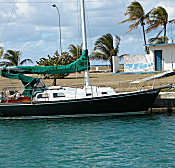 The indictment in the case of MIchael Zhang, the Chinese American arrested last week for exporting electronic circuits to China has been released. It provides some additional information on the government’s case, but leaves just as many questions unanswered.
The indictment in the case of MIchael Zhang, the Chinese American arrested last week for exporting electronic circuits to China has been released. It provides some additional information on the government’s case, but leaves just as many questions unanswered.
According to the indictment, in 2006, Zhang exported on four separate occasions, 602 MIC bus controllers manufactured by Vetronix Research to the PRC. Additionally, on one occasion in 2008, Zhang exported 5 SRAM chips manufactured by Cypress Semiconductors to the PRC.
Of course, in order for this to be a criminal offense, Zhang needed to know that these were export-controlled items, and the indictment provides little information as to the reason that these items were export-controlled or why Zhang was in fact aware that they were export controlled. And, as many export professionals will attest, determining whether electronic circuits such as these are export-controlled is a difficult task at best.
The Vetronix product involved, the MIC bus controller MIC-320GM is no longer listed on the Vetronix website, although the Google cache suggests that as late as October 2008, it was still listed. So I can’t determine whether the now-vanished listing provided sufficient information to determine whether the item was export-controlled or not.
The MIC bus is a protocol that apparently allows solving power/data distribution and management problems under inclement environmental conditions. That would at least make me suspicious that the item might be controlled, but that knowledge alone wouldn’t be enough to support an indictment.
In terms of enforcement policy, one also has to wonder why exports of this product led to a criminal prosecution rather than a civil penalty proceeding. A quick Google search on the part number reveals thousands of these same parts available for sale by Hong Kong parts distributors.
The SRAM chip exported by Zhang was Cypress’s STK14C88-5L45M. No datasheet or specifications for this product are available on the Cypress website, so there is no way to determine whether the item meets the specifications set forth in ECCN 3A001 which is probably the controlling ECCN. Of course, it’s possible that this information was on product-packaging or that the company had otherwise advised Zhang that the items were controlled, but it is not information that is readily-available.
Problems like this obviously have motivated BIS to announce today a project that might make more information available as to the export classification of various items. Under the new project BIS is soliciting manufacturers to provide voluntarily links to classification information on their products. BIS will then make those links available on a BIS web page. Whether or not enough manufacturers will participate to make this a useful resource remains to be seen.

 Posted by
Posted by  Category:
Category: 



 The National Research Council, a group comprised of representatives of the National Academy of Sciences, the National Academy of Engineering, and the Institute of Medicine, recently released a
The National Research Council, a group comprised of representatives of the National Academy of Sciences, the National Academy of Engineering, and the Institute of Medicine, recently released a  On January 10, FBI agents arrested William Chi-Wai Tsu, a U.S. citizen and resident of California. Tsu, who was born in Shanghai, was detained on charges that he had illegally exported electronic components to China without first obtaining required licenses from the Bureau of Industry and Security (“BIS”). An extraordinarily detailed
On January 10, FBI agents arrested William Chi-Wai Tsu, a U.S. citizen and resident of California. Tsu, who was born in Shanghai, was detained on charges that he had illegally exported electronic components to China without first obtaining required licenses from the Bureau of Industry and Security (“BIS”). An extraordinarily detailed 

